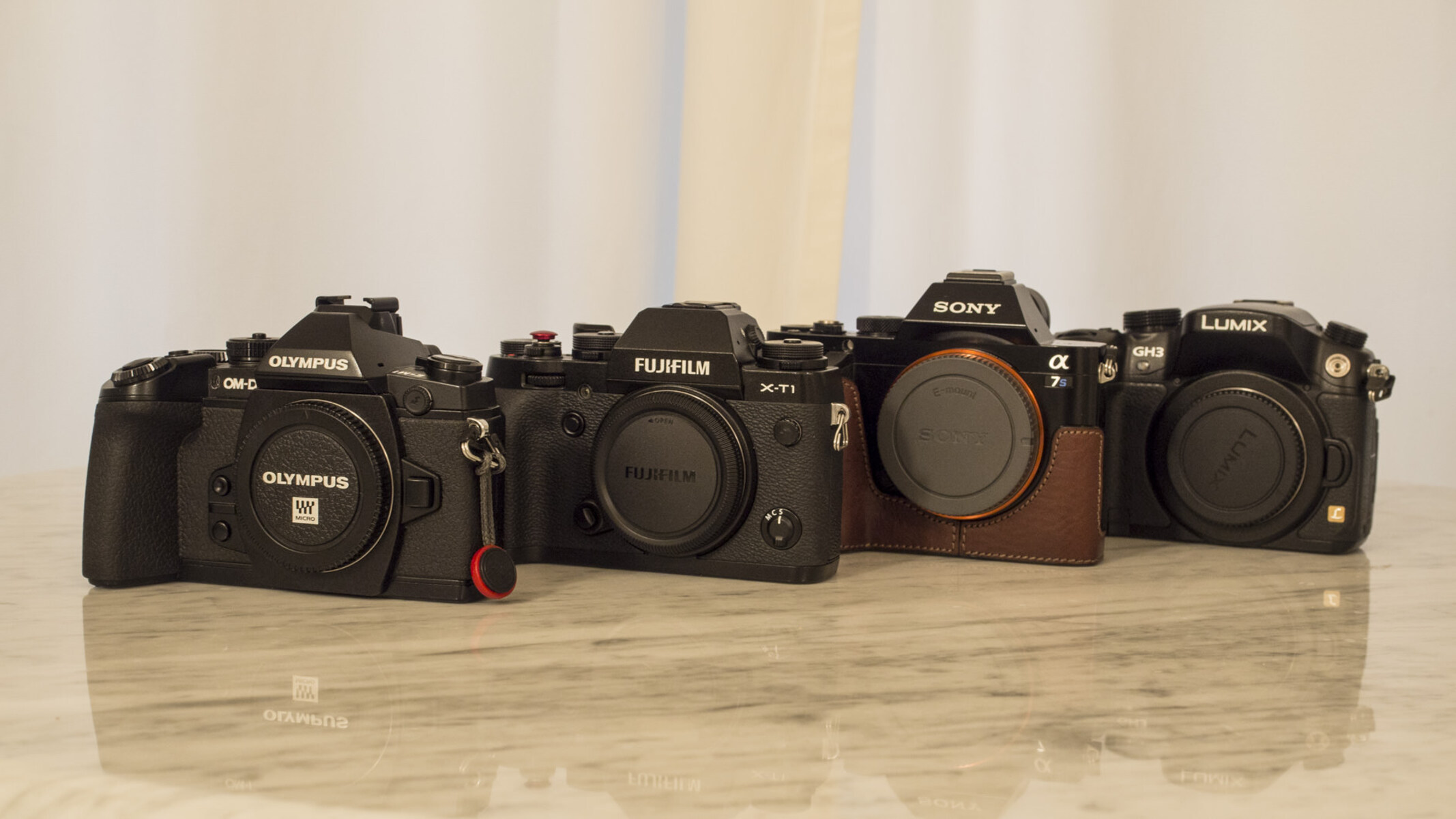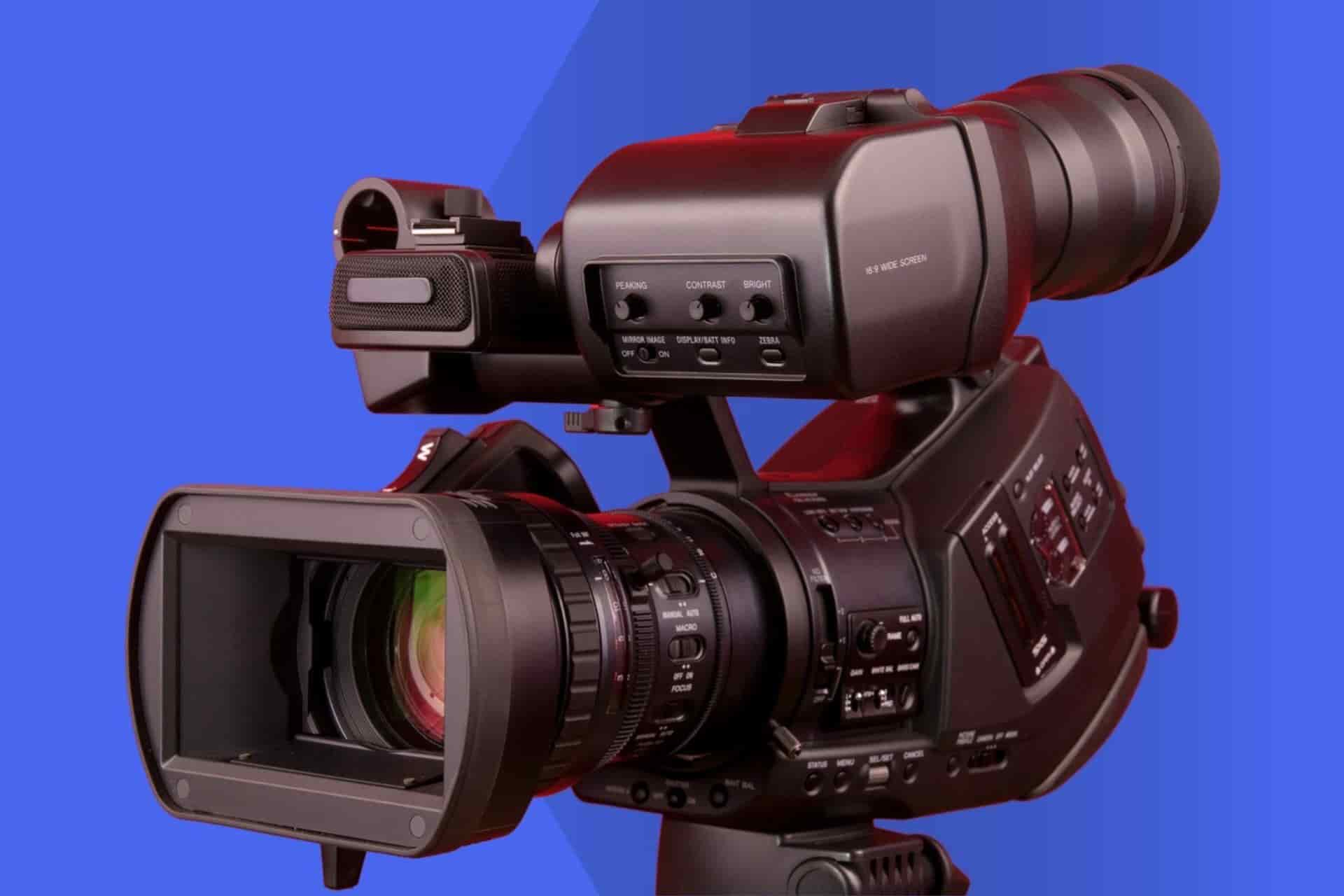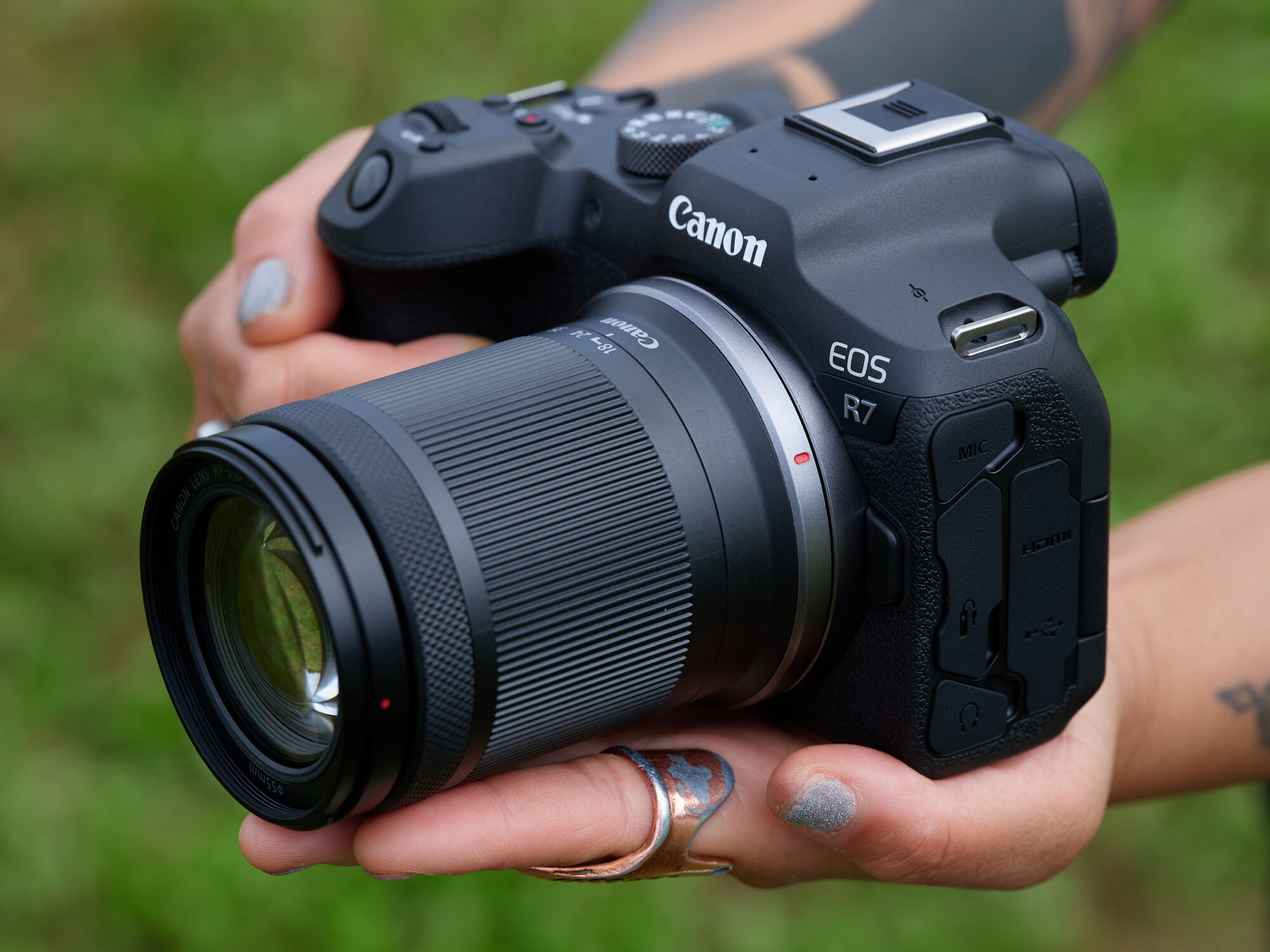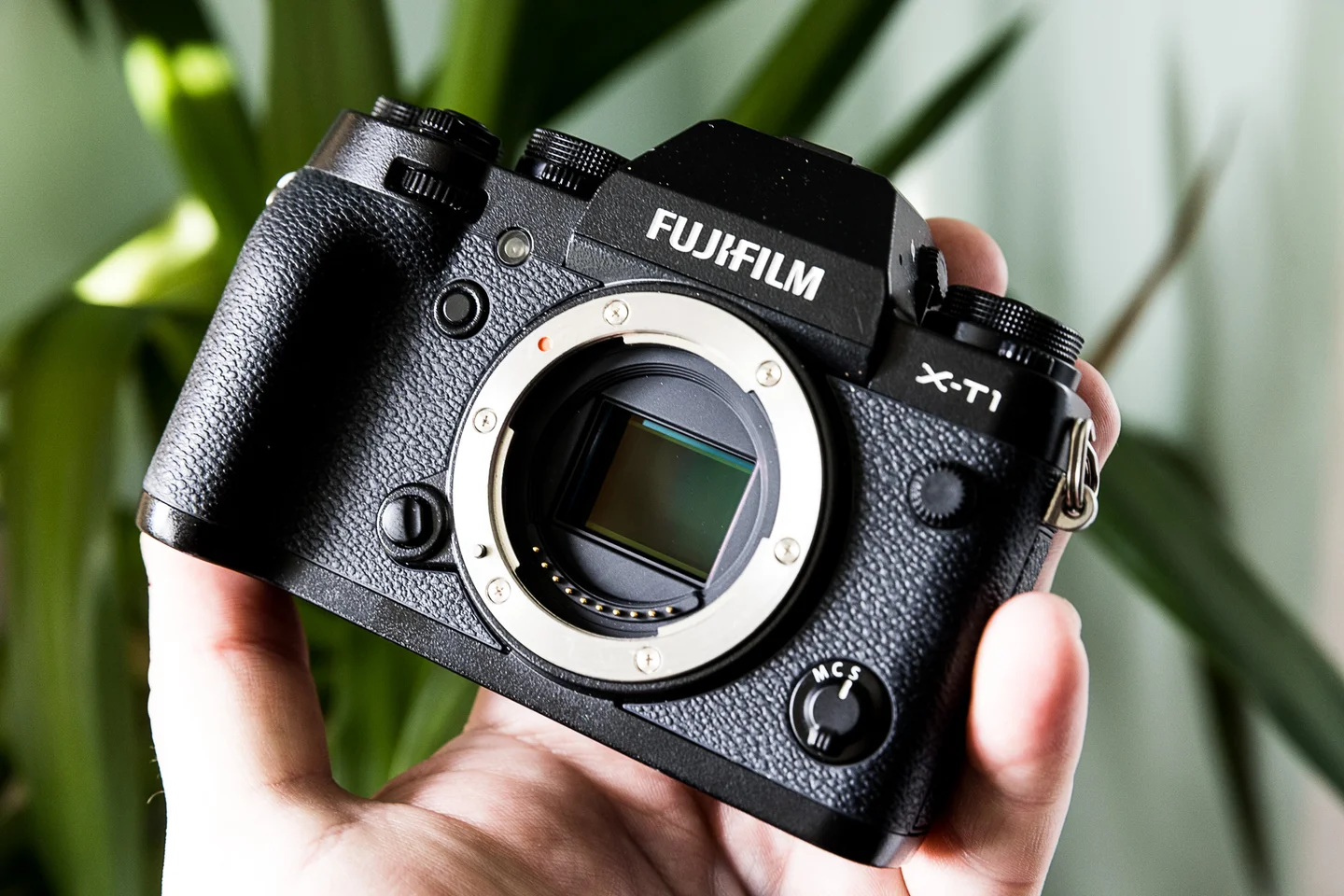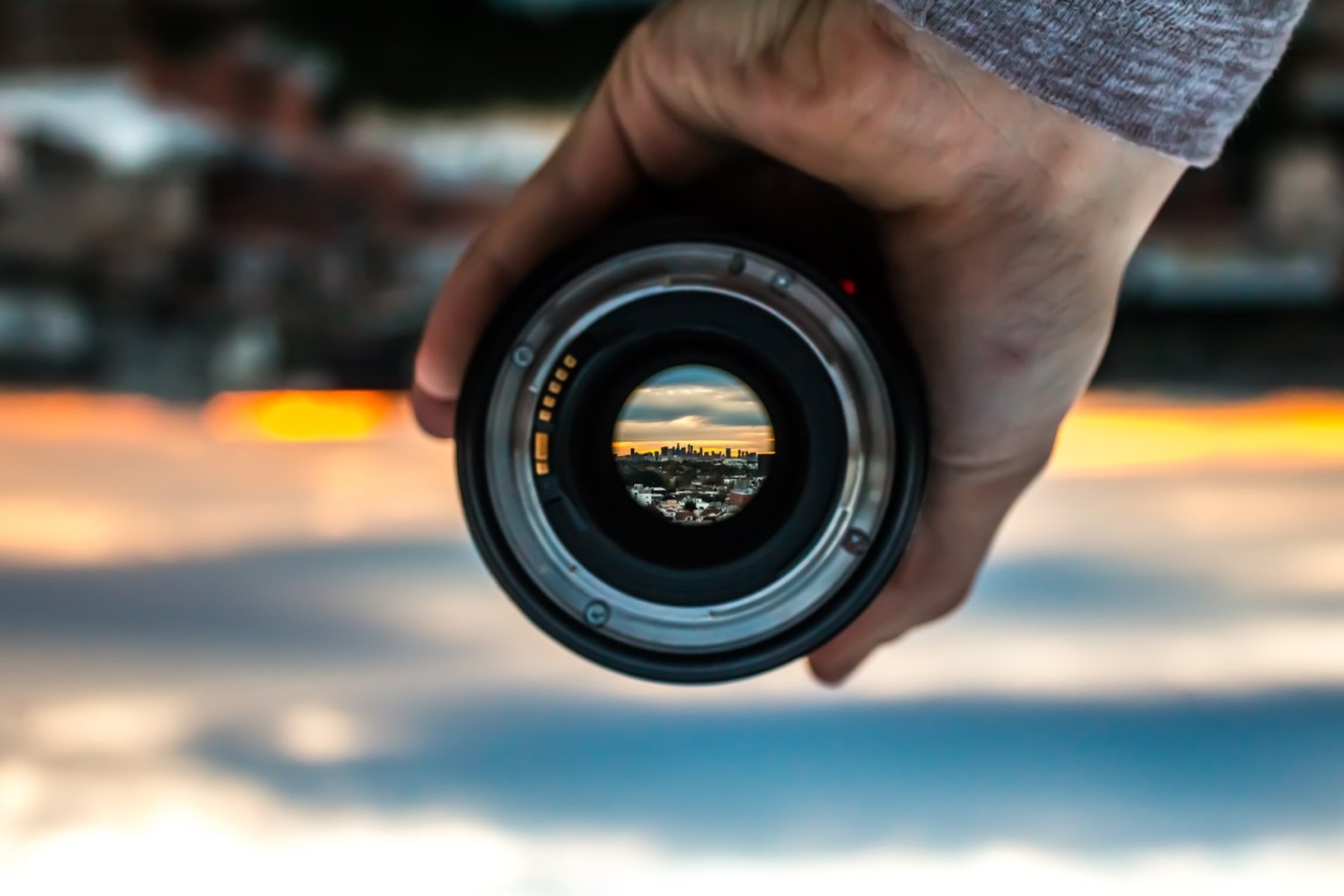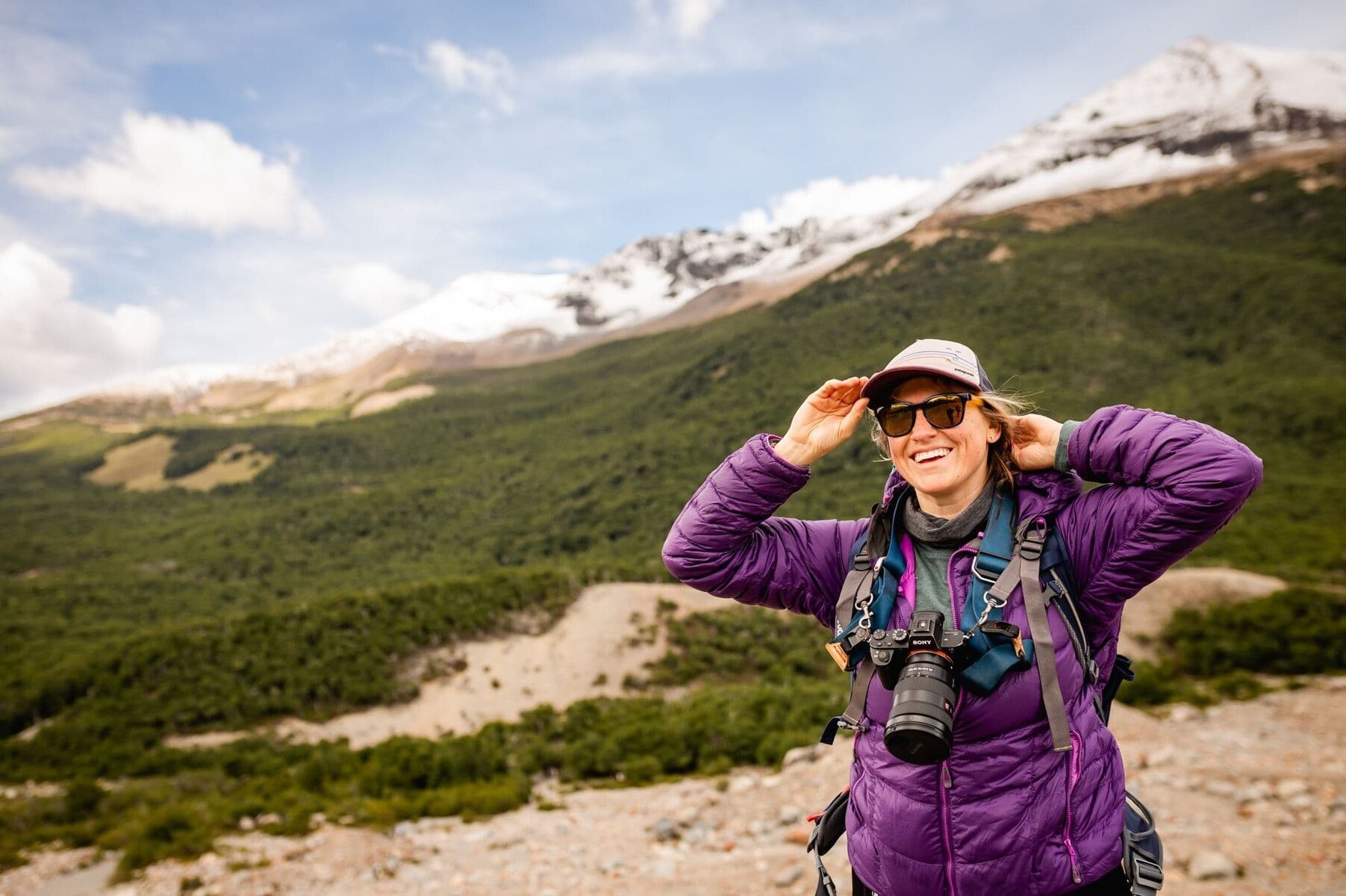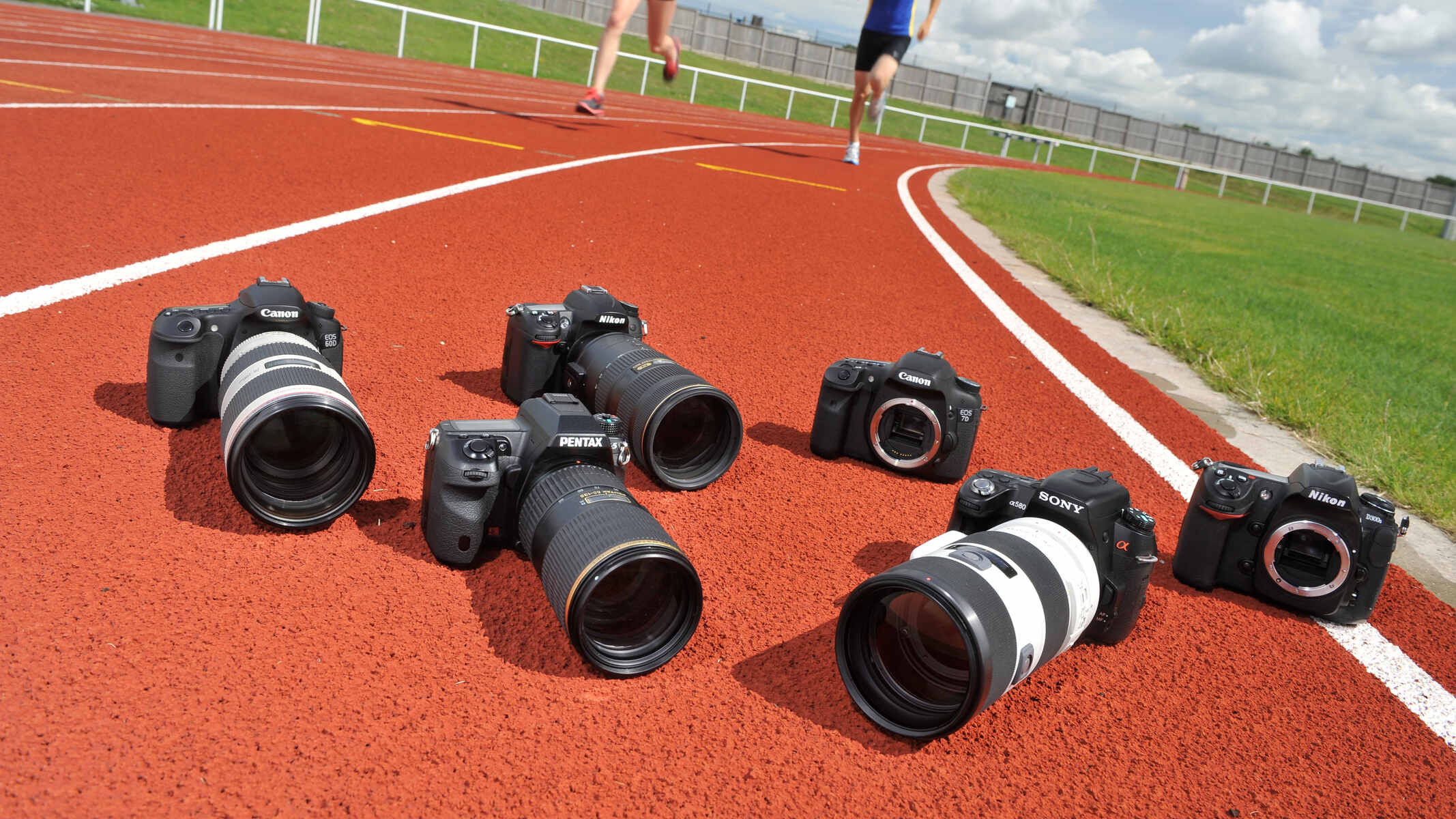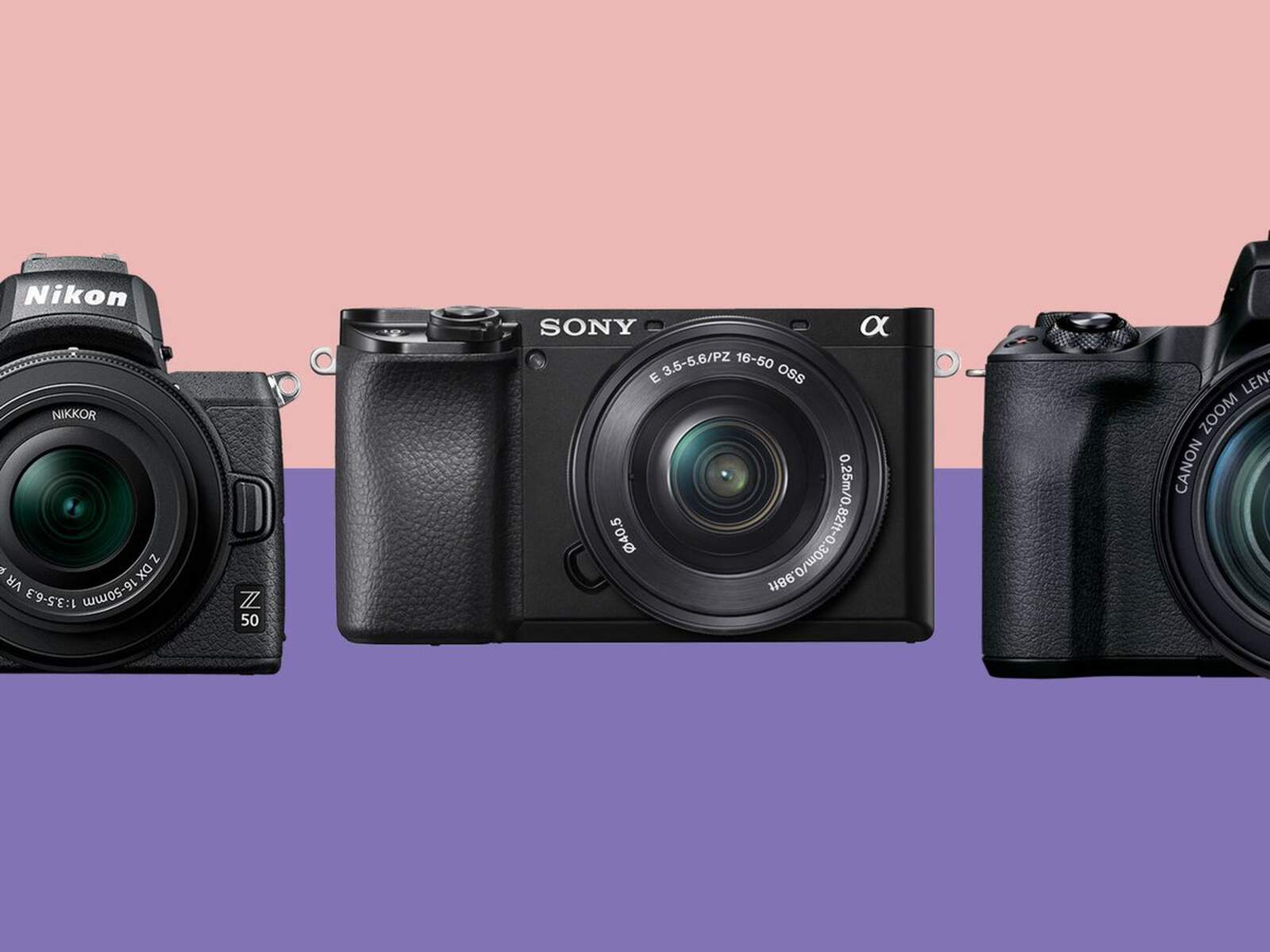Introduction
Welcome to the exciting world of mirrorless cameras! Whether you’re a professional photographer, a hobbyist, or a casual shooter, the decision to invest in a mirrorless camera can significantly impact your photography experience. With their compact size, cutting-edge technology, and impressive image quality, mirrorless cameras have gained immense popularity in recent years. However, choosing the right mirrorless camera can be a daunting task, given the wide array of options available in the market. This guide aims to simplify the selection process by highlighting key factors to consider when choosing a mirrorless camera that aligns with your specific needs and preferences.
From sensor size and lens compatibility to autofocus capabilities and price points, each aspect plays a crucial role in determining the suitability of a mirrorless camera for your unique photography style. By understanding the significance of these factors and how they correspond to your requirements, you can make an informed decision that enhances your photographic journey.
Join us as we delve into the essential considerations that will empower you to select a mirrorless camera that not only meets your current needs but also accommodates your future growth as a photographer. Whether you’re drawn to landscape photography, portrait sessions, street photography, or videography, the right mirrorless camera can serve as a reliable companion, capturing the moments that matter most to you with precision and artistry.
Consider Your Photography Needs
Before embarking on the journey of selecting a mirrorless camera, it’s vital to introspect and identify your specific photography needs. Consider the genres you predominantly shoot, such as landscape, portrait, wildlife, or street photography, as well as your aspirations for delving into videography. Understanding your photography goals and the environments in which you typically shoot will guide you in choosing a mirrorless camera that complements your style and creative vision.
If you are a landscape photographer who frequently ventures into rugged terrains, a weather-sealed camera with exceptional dynamic range and high-resolution capabilities may be paramount. Conversely, portrait photographers may prioritize a camera with superb low-light performance, precise autofocus, and a variety of compatible portrait lenses to achieve stunning bokeh effects and flattering portraits. Wildlife photographers might prioritize fast and accurate autofocus, high burst rates, and extensive telephoto lens options to capture elusive subjects in their natural habitat.
Furthermore, if you have an interest in videography, a mirrorless camera with advanced video features, such as 4K recording, in-body stabilization, and microphone input, can elevate your filmmaking endeavors. By thoroughly assessing your photography and videography requirements, you can narrow down the features and capabilities that are indispensable for your creative pursuits.
Sensor Size and Megapixels
The sensor size and megapixel count of a mirrorless camera are pivotal factors that directly influence image quality, low-light performance, and the ability to produce detailed, high-resolution photographs. Mirrorless cameras are equipped with a variety of sensor sizes, including full-frame, APS-C, and Micro Four Thirds, each offering distinct advantages tailored to different shooting scenarios.
A full-frame sensor, equivalent to the size of a 35mm film frame, provides superior light-gathering capabilities and shallow depth of field, making it ideal for professional photographers and enthusiasts seeking uncompromising image quality. The larger sensor size results in better performance in low-light conditions, impressive dynamic range, and the ability to achieve exquisite bokeh for captivating portraits and compelling landscapes.
For photographers who prioritize portability without sacrificing image quality, APS-C and Micro Four Thirds sensors offer compelling alternatives. APS-C sensors strike a balance between image quality and size, making them suitable for a wide range of photographic genres. They are particularly favored by enthusiasts and professionals seeking versatile cameras for travel, street photography, and wildlife photography.
Micro Four Thirds sensors, being the most compact, excel in providing lightweight and portable camera options while maintaining respectable image quality. They are well-suited for photographers and videographers who prioritize agility and versatility, making them ideal for documentary work, vlogging, and casual shooting.
When it comes to megapixels, higher resolution sensors enable the capture of intricate details and facilitate substantial cropping without compromising image quality. However, it’s important to strike a balance between megapixels and low-light performance, as higher megapixel counts may lead to increased noise in low-light conditions. Understanding the relationship between sensor size, megapixels, and your specific photographic needs will guide you in selecting a mirrorless camera that aligns with your creative aspirations and technical requirements.
Lens Options and Compatibility
When choosing a mirrorless camera, the availability and compatibility of lenses are crucial considerations that significantly impact your photographic capabilities and creative flexibility. The lens ecosystem of a camera system encompasses a diverse array of focal lengths, apertures, and specialized optics, catering to various genres and shooting scenarios.
One of the key advantages of mirrorless cameras is the adaptability to a wide range of lenses, including native lenses designed specifically for the camera system and the ability to utilize lenses from other manufacturers via adapters. This versatility opens up a world of creative possibilities, allowing photographers to explore different perspectives and experiment with unique optical characteristics.
Native lens offerings vary across camera brands, encompassing standard zoom lenses, prime lenses, telephoto lenses, macro lenses, and specialty lenses tailored to specific genres such as astrophotography or architectural photography. The availability of high-quality lenses within a camera system is essential for expanding your creative horizons and ensuring that you have the right tools to bring your vision to life.
Furthermore, the compatibility of third-party lenses through adapters enhances the appeal of mirrorless cameras, enabling photographers to leverage existing lenses from other systems or access specialized optics that may not be available within the native lens lineup. Whether it’s vintage manual-focus lenses, renowned third-party optics, or exotic lenses with unique characteristics, the adaptability of mirrorless cameras broadens the scope of lens options at your disposal.
Before investing in a mirrorless camera, it’s beneficial to research the availability of lenses that align with your photographic interests and future aspirations. Whether you prioritize versatile zoom lenses for everyday shooting, fast prime lenses for low-light portraiture, or expansive telephoto lenses for wildlife photography, the breadth and quality of available lenses play a pivotal role in shaping your photographic journey with a mirrorless camera.
Size and Weight
The compact and lightweight nature of mirrorless cameras is a defining feature that appeals to photographers seeking portability without compromising on image quality and performance. Compared to traditional DSLR cameras, mirrorless systems offer a more streamlined and portable form factor, making them well-suited for travel, street photography, and on-the-go shooting.
By eliminating the bulky mirror box found in DSLRs, mirrorless cameras achieve a more compact design, resulting in a reduction in overall size and weight. This advantage is particularly significant for photographers who prioritize agility and mobility, as it allows for effortless carrying and maneuvering, especially during extended shooting sessions or while navigating challenging environments.
Furthermore, the compact size of mirrorless cameras contributes to a less obtrusive presence, making them ideal for candid photography, documentary work, and street shooting, where blending into the surroundings and capturing authentic moments are paramount. The discreet nature of mirrorless cameras, coupled with their diminutive form, empowers photographers to engage with their subjects more intimately and capture compelling imagery without drawing undue attention.
When considering the size and weight of a mirrorless camera, it’s important to account for the overall ergonomics and handling, ensuring that the camera feels comfortable and balanced in your hands, especially when paired with different lenses. Additionally, the reduced bulk of mirrorless systems enhances their appeal for videographers, offering a more unobtrusive setup for capturing cinematic footage in various environments.
While the compact size and lightweight construction of mirrorless cameras offer undeniable advantages, it’s essential to strike a balance between portability and handling, especially for photographers with larger hands or those who require extensive physical controls for precise adjustments. Evaluating the size and weight of a mirrorless camera in relation to your shooting style, comfort preferences, and intended use cases will guide you in selecting a camera that seamlessly integrates into your photographic workflow while supporting your creative endeavors.
Viewfinder and LCD Screen
The viewfinder and LCD screen are integral components of a mirrorless camera, offering distinct means of composing and reviewing images. Understanding their features and capabilities is essential for making an informed decision when selecting a mirrorless camera that aligns with your shooting preferences and visual storytelling style.
Electronic Viewfinder (EVF) technology sets mirrorless cameras apart from traditional DSLRs, providing a real-time, high-resolution preview of the scene through the lens. This feature offers numerous advantages, including exposure simulation, focus peaking, and the ability to preview the impact of settings adjustments before capturing an image. The EVF’s electronic overlay also facilitates the display of pertinent shooting information, such as histogram, grid lines, and electronic levels, enhancing the photographer’s ability to make informed composition and exposure decisions.
Additionally, the presence of an articulating or tilting LCD screen in mirrorless cameras enhances shooting versatility, enabling photographers to frame compositions from high or low angles, execute creative perspectives, and capture self-portraits or vlogs with ease. The touch functionality of modern LCD screens further streamlines the user interface, allowing for intuitive menu navigation, quick focus point selection, and seamless image review through gestures and taps.
For videographers, the combination of an electronic viewfinder and a responsive, vari-angle LCD screen offers comprehensive tools for monitoring and capturing footage from diverse angles and shooting scenarios. The ability to adjust exposure and focus settings while previewing the scene through the EVF or LCD screen contributes to a more efficient and immersive filmmaking process.
When evaluating the viewfinder and LCD screen of a mirrorless camera, factors such as resolution, refresh rate, touch sensitivity, and customization options should be considered to ensure that the camera’s visual interfaces align with your technical requirements and shooting preferences. Whether you prioritize the immediacy and precision of an electronic viewfinder or the flexibility and accessibility of a versatile LCD screen, the synergy between these components significantly influences the shooting experience and creative potential offered by a mirrorless camera.
Autofocus and Image Stabilization
The autofocus (AF) system and image stabilization capabilities of a mirrorless camera play a pivotal role in facilitating precise and steady image capture across a diverse range of shooting scenarios. These features are instrumental in enhancing the camera’s usability, ensuring sharp and well-focused images, and mitigating the impact of camera shake, particularly in challenging lighting conditions or when using telephoto lenses.
Modern mirrorless cameras are equipped with advanced autofocus systems that leverage sophisticated algorithms, phase-detection and contrast-detection technologies, and AI-driven subject tracking to achieve swift and accurate focus acquisition. The speed and accuracy of the AF system are particularly beneficial for capturing fast-moving subjects, enabling photographers to confidently pursue sports photography, wildlife encounters, and dynamic street scenes with a high degree of success.
Furthermore, the presence of in-body image stabilization (IBIS) or lens-based stabilization mechanisms significantly reduces the impact of camera shake, allowing for sharper handheld images and smoother video footage. Image stabilization is particularly advantageous in low-light conditions, where slower shutter speeds are employed, and when utilizing telephoto lenses or engaging in handheld videography. The stabilization capabilities contribute to greater creative freedom, enabling photographers to explore longer exposure times and achieve steady, blur-free images without the reliance on a tripod.
For videographers, the effectiveness of the image stabilization system directly influences the quality of handheld footage, minimizing unwanted camera movements and ensuring a more professional and polished visual presentation. The combination of reliable autofocus performance and robust image stabilization empowers videographers to capture cinematic sequences with confidence, maintaining focus on the subject while mitigating the impact of motion-induced jitter and shake.
When evaluating a mirrorless camera’s autofocus and image stabilization features, it’s important to consider factors such as the number of autofocus points, tracking capabilities, responsiveness in low-light conditions, and the effectiveness of the stabilization system across different focal lengths. Understanding how these features align with your specific photography and videography requirements will guide you in selecting a camera that enhances your creative potential and delivers consistent, high-quality results in diverse shooting scenarios.
Battery Life and Accessories
Battery life is a critical consideration when choosing a mirrorless camera, as it directly impacts the camera’s usability and endurance during extended shooting sessions. The compact form factor of mirrorless cameras often necessitates smaller battery sizes, leading to variations in battery life across different camera models. Understanding the typical shooting scenarios you encounter and the availability of supplementary power sources is essential for ensuring uninterrupted shooting and minimizing downtime.
When assessing battery life, factors such as the number of shots per charge, the availability of spare batteries, and the compatibility with external power banks or battery grips should be taken into account. This is particularly important for photographers engaged in travel, events, or documentary work, where access to charging facilities may be limited, and the ability to rely on an extended power source is invaluable.
Furthermore, the availability of accessories and ancillary equipment tailored to the specific mirrorless camera system enhances its functionality and expands its capabilities. This includes a wide range of accessories such as additional batteries, battery grips for extended shooting comfort and enhanced battery life, external flash units for versatile lighting control, and remote shutter releases for precise and hands-free shooting.
Additionally, the compatibility with a diverse selection of lenses, lens adapters, external microphones, and specialized camera bags or carrying solutions contributes to the overall versatility and adaptability of the camera system. The availability of a robust ecosystem of accessories and ancillary equipment ensures that the mirrorless camera can be tailored to suit individual shooting preferences and accommodate a wide range of creative applications.
Moreover, the integration of wireless connectivity features, such as built-in Wi-Fi, Bluetooth, or NFC, further expands the camera’s capabilities by enabling seamless file transfer, remote camera control from a mobile device, and the integration with compatible accessories such as wireless flash systems or intervalometers for time-lapse photography.
By considering the battery life and the availability of accessories and ancillary equipment, photographers can ensure that their mirrorless camera system is equipped to meet their specific shooting requirements, enabling them to focus on their creative vision without being hindered by technical limitations or power constraints.
Price and Budget
When contemplating the purchase of a mirrorless camera, the consideration of price and budget is a crucial aspect that influences the available features, performance, and overall value of the camera system. Mirrorless cameras are available across a wide spectrum of price points, catering to the diverse needs and preferences of photographers at various skill levels and financial capacities.
Entry-level mirrorless cameras offer an accessible entry point for beginners and enthusiasts, providing essential features, intuitive controls, and a lightweight design at a budget-friendly price. These cameras serve as an ideal platform for individuals looking to transition from smartphone or compact cameras to a more capable and versatile imaging tool without an exorbitant financial commitment.
Mid-range mirrorless cameras strike a balance between performance, features, and affordability, appealing to enthusiasts and semi-professionals seeking advanced imaging capabilities, robust build quality, and a comprehensive range of customization options. These cameras often offer a compelling blend of cutting-edge technology, ergonomic design, and versatility, making them suitable for a wide array of photographic genres and creative applications.
At the higher end of the price spectrum, premium mirrorless cameras cater to professional photographers and advanced enthusiasts who demand uncompromising image quality, extensive customization, and an array of sophisticated features and capabilities. These cameras often incorporate state-of-the-art sensor technology, advanced autofocus systems, rugged construction, and a comprehensive selection of native lenses and accessories, offering a comprehensive imaging solution for discerning photographers.
When evaluating the price and budget for a mirrorless camera, it’s essential to consider the long-term investment, encompassing not only the initial camera body cost but also the availability and cost of compatible lenses, accessories, and potential future upgrades. Additionally, factoring in the potential for growth within a specific camera system and the value derived from the overall user experience and creative potential is instrumental in making an informed decision that aligns with your budget and photographic aspirations.
Conclusion
Choosing a mirrorless camera is a significant decision that hinges on a multitude of factors, each contributing to the overall functionality, performance, and creative potential of the camera system. By considering your specific photography needs, sensor size, lens compatibility, size and weight, viewfinder and LCD screen, autofocus and image stabilization, battery life and accessories, as well as price and budget, you can navigate the diverse landscape of mirrorless cameras with confidence and clarity.
Understanding your photography goals and the environments in which you predominantly shoot is foundational to selecting a mirrorless camera that seamlessly integrates into your creative workflow. Whether you’re drawn to the expansive vistas of landscape photography, the intimate nuances of portrait sessions, the dynamic energy of street photography, or the captivating allure of videography, aligning the camera’s capabilities with your artistic vision is paramount.
The interplay of sensor size and megapixels influences image quality, low-light performance, and the ability to capture intricate details, while the availability and compatibility of lenses open up a world of creative possibilities, allowing you to explore diverse perspectives and optical characteristics. The compact size and lightweight construction of mirrorless cameras offer unparalleled portability and discretion, empowering you to engage with your subjects intimately and capture authentic moments with agility and finesse.
Furthermore, the viewfinder and LCD screen, coupled with advanced autofocus and image stabilization capabilities, provide essential tools for precise composition, immersive shooting experiences, and steady image capture across a myriad of scenarios. The consideration of battery life, accessories, and wireless connectivity features ensures that your mirrorless camera system is equipped to meet your specific shooting requirements and adapt to a wide range of creative applications.
Finally, the assessment of price and budget guides you in making an informed investment that aligns with your financial capacity and long-term photographic aspirations, considering not only the initial camera body cost but also the potential for growth within a specific camera system and the overall value derived from the user experience.
By meticulously evaluating these factors and understanding how they correspond to your unique photography journey, you can confidently select a mirrorless camera that serves as a faithful companion, capturing the moments that matter most to you with precision, artistry, and enduring quality.







